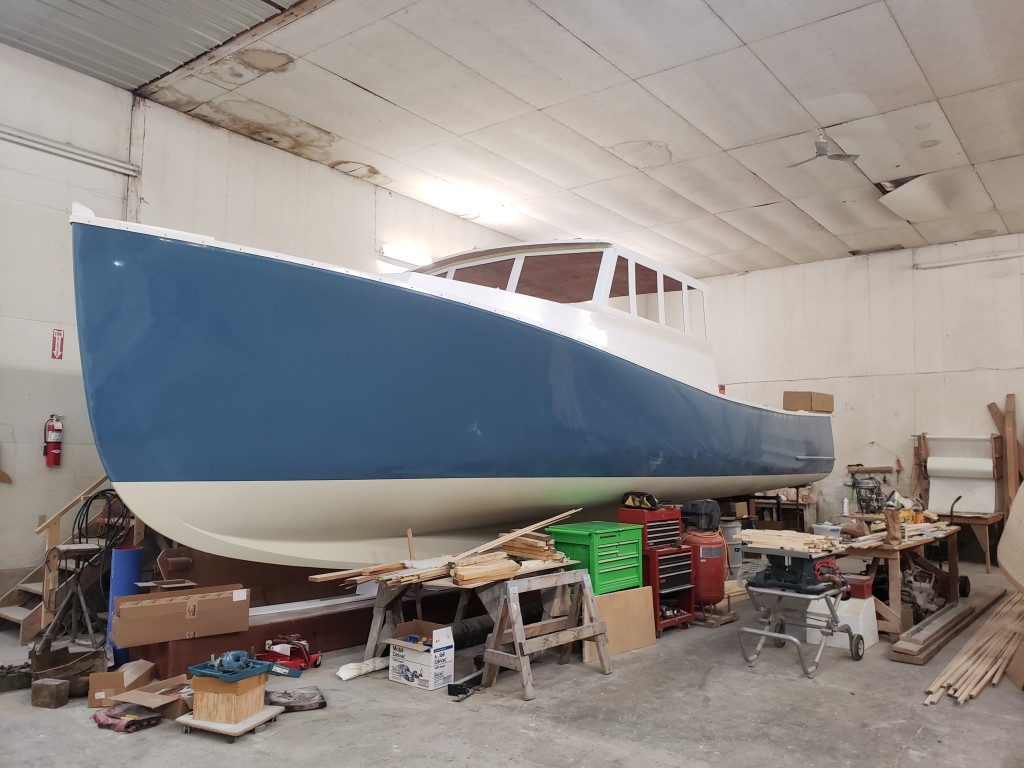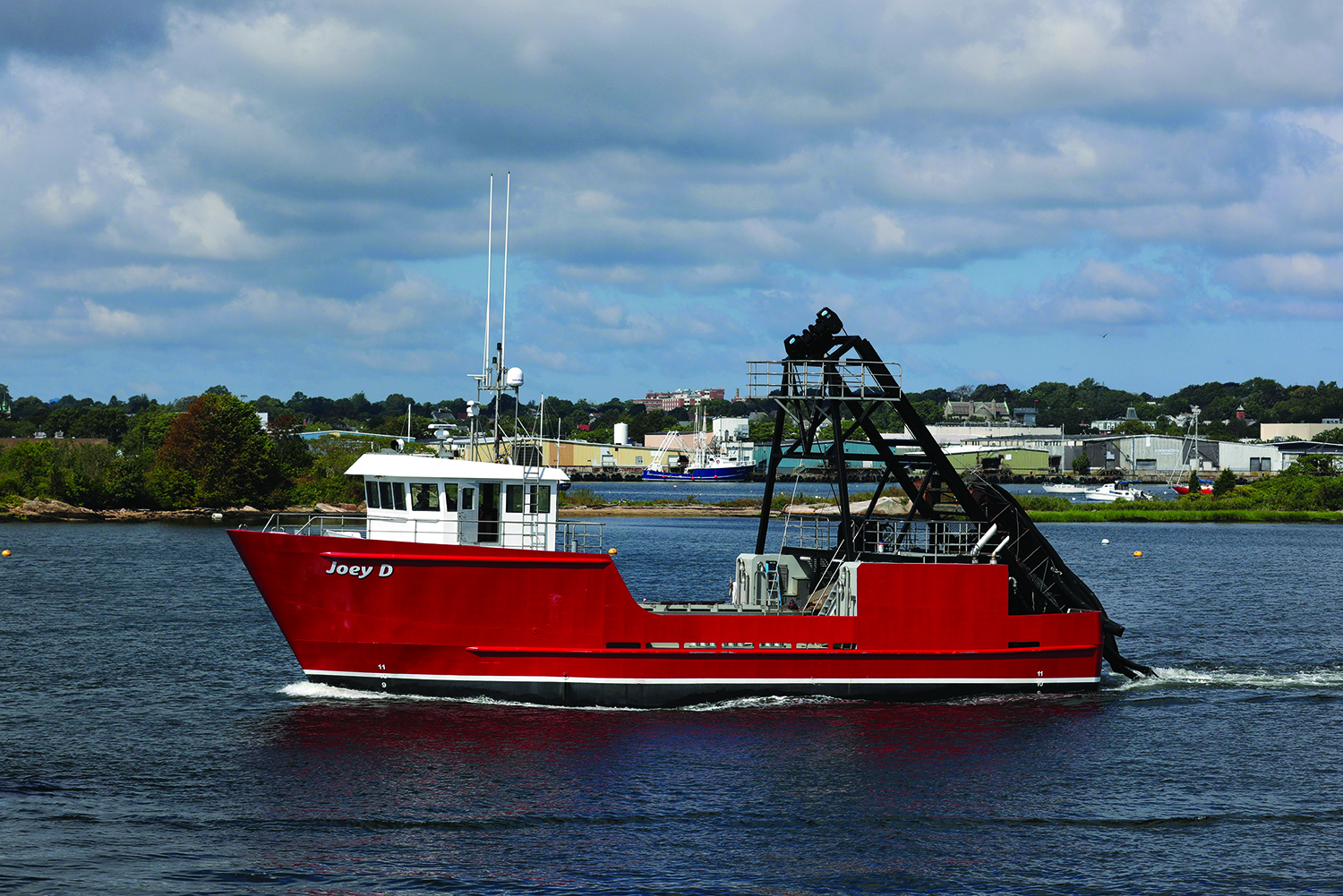Fairhaven Shipyard in Fairhaven, Mass., delivered the Joey D to Oceanside Marine at the beginning of October. The 90' x 28' clammer, designed by Farrell & Norton Naval Architects, is working out of Atlantic City, N.J., supplying clams to LaMonica Fine Foods.
“Basically they are upgrading their fleet,” says Farrell & Norton’s Tom Farrell in Newcastle, Maine. One difference between the Joey D and many other clammers is how the towing wire at the top of the gantry leads out to the drag. “A lot of boats have a fixed sheave up there,” says Farrell, “that isn’t able to travel with the wire as it starts going outside the boat.” It’s a hard point that wears out the towing wire.
The solution was to go with a different type of sheave, “a fairlead instead of a fixed sheave to try to save the wire,” says Farrell. The “sheave will twist with the wire as the drag is being brought back into the boat or as it is being towed.”
When the clams come aboard, they end up in cages in the hold, which has a 44-cage capacity with possibly 12 more on deck. An 800-hp Cummins QSK18 powers the Joey D. That’s “an upgrade in power compared to their other boats,” says Farrell.
Currently, Farrell & Norton has two scallopers being built to their design. One is for Warren Alexander of Atlantic Shellfish at Jemison Marine in Bayou LaBatre and the other is for Eastern Fisheries at Duckworth Steel Boats in Tarpon Springs, Fla.
“People are definitely interested in building more,” Farrell says. “I think they are realizing that the fleet is old.” Kevin McLaughlin at Fairhaven Shipyard would probably agree with that. While Fairhaven Shipyard has a number of commercial boats in for repairs, there hasn’t recently been a lot of interest in new boats. But now McLaughlin says he has “quite a few people interested in building new boats.” He’s talking with two parties interested in new scallopers and two wanting draggers. It “just gets down to the age. Those are older boats,” says McLaughlin of the existing New England fishing fleets.
In Steuben, Maine, it won’t be the usual Maine lobster boat that comes out of Boricua Custom Boats. Nope, when the 44' x 18' 10" Grin-N-Barrett, being built for Harrington’s Dean Barrett, emerges from the shop’s doors it won’t be just a lobster boat, but a combination lobster boat and dragger. It’s probably not a surprise that combining the two fisheries on this 44-footer is taking place at Boricua Custom Boats. Moses Ortiz, the boatshop’s owner, says, “I like to do things differently.”
The hull started out as an Osmond 47 that its builder, H&H Marine, also in Steuben, shortened to 44 feet. “This is the first one. There’s not another one like it,” says Ortiz. He is building her “light enough and strong enough” for both fisheries.

The trawl winch will go between the wheelhouse and the front of the lobster tanks. That area of the deck is constructed with heavily fiberglassed ¾-inch Coosa Board with a ¼-inch stainless steel plate over it. Supporting posts are beneath the deck. “It will be very rugged in that area,” noted Ortiz.
He describes the changeover from one fishery to another as “plug and play.” For bottom fishing, the trawl winch will be bolted to the stainless steel plate. When it’s time for hauling lobster traps instead of a bottom trawl, the winch is removed and stored. Then ½-inch plastic bolts seal the winch plate’s bolt holes, “so nothing leaks into the engine room.”
On lobster boats, Ortiz normally runs a stainless steel plate the length of the starboard washboard, making that section of the hull, “pretty much unbreakable,” he says. Where the trawl doors will be situated, the underside of the starboard and port washboard’s last 5 feet are being heavily fiberglassed.
The split wheelhouse has dual steering stations. In the engine room is a 1,000-hp MAN, and aft of the engine room the fish hold has a 36-crate capacity for lobsters. Up forward are a hydraulic room, four bunks, a microwave and spaces for toolboxes.







